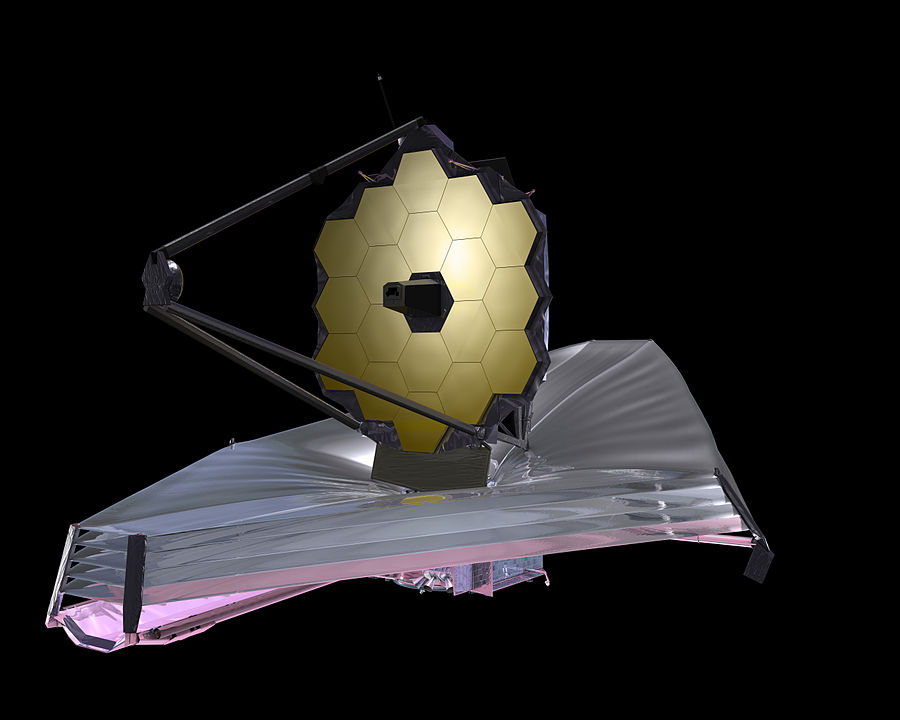
I learned this today. A Lagrange point is a point of equilibrium where the gravitational forces of two large objects balance out the centripetal force. A third object can remain motionless in a Lagrange point without having to use any power.
Centripetal force is the force that acts on an object in a circular motion, pulling it toward the center. When a satellite orbits a planet, gravity acts on the satellite, pulling it toward the center of the planet. Gravity is the centripetal force in this case. This causes acceleration toward the center of the planet. If you stand on a mountain and fire a cannonball, the ball will slowly curve down toward the Earth before it strikes it. If you can fire the cannonball with a higher velocity, it will go even farther and if you can fire the cannonball with a stupendous velocity, it would fall toward the Earth, but at the same speed that the Earth curves away from it. If you can do this, your cannonball will be in orbit. Obviously, you can’t do this. But you can if your starting point is high enough and your velocity is great enough.
The satellite has a high horizontal velocity, given to it by the spaceship that carried it into space. If the horizontal velocity is lower than the centripetal force, the satellite will slowly lose height and be pulled into the center of the planet, like the cannonball. If the horizontal velocity equals the centripetal force, the Earth will curve away at the same speed as the satellite falls towards it and the satellite will orbit around the planet. If the horizontal velocity is greater than the centripetal force, the satellite will slowly gain height.
The closer you are to a planet, the stronger the gravity is. It is hard to get the cannonball to go around the Earth because the gravity is so high that you would need a staggering velocity. At sea level, gravity on Earth is 9.8 m/s2. Gravity decreases the farther away from the planet you go. At 100 km above sea level it is 9.5 m/s2. At 500 km, it is 8.7 m/s2. And it keeps decreasing. At 1000 km, it is 7.3 m/s2.
The Lagrange point is the point where the gravity from two different planets is equal. For example, there is a Lagrange point between the Earth and the sun. A satellite is pulled towards the Earth and orbits around it. At the Langrage point it is pulled equally toward the sun as it is toward the Earth, and it is motionless.
Every major planet or star has Lagrange points Earth has 5 of them with the sun and 5 more with the moon. They are labelled L1 to L5.
The first three Lagrange points were discovered by Leohnard Euler in the 1760s. Leohnard Euler is said to be the greatest mathematician of all time and he was responsible for popularizing the Greek letter π in mathematics. The last two points were discovered by Joseph-Louis Lagrange in 1772. Lagrange and Euler worked together on a number of theories.
Lagrange points are very useful for astronomy. The James Webb Space Telescope launched in 2021, will settle at the L2 Lagrange point. At this point the telescope will be stationary and it won’t have to constantly orbit the Earth. Each time an object orbits the Earth it goes in and out of the Earth’s shadow and heats up or cools down. This would distort and pictures of space.
The L2 point is 1.5 million km behind the Earth and is farther out than the moon. It is colder than being near the Earth which means the telescope won’t need coolant. It will cool down to -223℃. At this temperature, the radiation from the telescope will be reduced to almost zero and it will be more sensitive to incoming radiation. It is using a sunshield to block light and heat from the sun, Earth and moon. The benefit of the Lagrange point is that these three bodies are always on the same side of the space telescope because it is stationary.
All space bodies have Lagrange points if they are orbiting or being orbited. Some of these Lagrange points become traps for space matter which gets in but cannot get out. Jupiter is so massive that some of its Lagrange points have over a million small asteroids gathered in them. This could have saved the Earth from multiple asteroid impacts over the life of the planets.
So, Lagrange points are points between two large bodies orbiting each other where the gravitational and orbital forces cancel each other out. An object, such as a satellite, at this point will effectively be stationary. This is why the L2 Lagrange point has been chosen for the James Webb Space Telescope. Some of these points gather up natural things like asteroids and space dust. And this is what I learned today.
Image By NASA – https://web.archive.org/web/20100527230418/http://www.jwst.nasa.gov/images_artist13532.html (direct link), Public Domain, https://commons.wikimedia.org/w/index.php?curid=7732621
Sources
https://en.wikipedia.org/wiki/James_Webb_Space_Telescope
https://en.wikipedia.org/wiki/Lagrange_point
https://en.wikipedia.org/wiki/Leonhard_Euler
https://en.wikipedia.org/wiki/Joseph-Louis_Lagrange
https://solarsystem.nasa.gov/resources/754/what-is-a-lagrange-point/
https://en.wikipedia.org/wiki/Centripetal_force
https://en.wikipedia.org/wiki/Orbit
https://www.space.com/30302-lagrange-points.html
https://www.esa.int/Science_Exploration/Space_Science/Herschel/L2_the_second_Lagrangian_Point
https://www.scientificamerican.com/article/what-is-a-lagrange-point/
https://www.nesdis.noaa.gov/news/why-dont-satellites-fall-out-of-the-sky
https://www.physicsclassroom.com/class/circles/Lesson-4/Circular-Motion-Principles-for-Satellites
